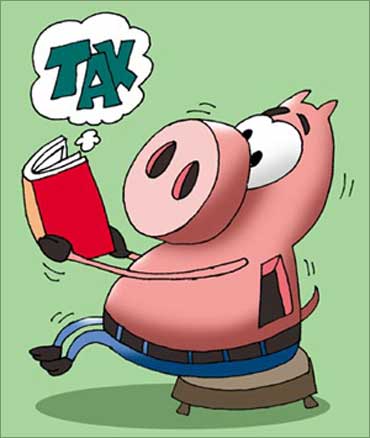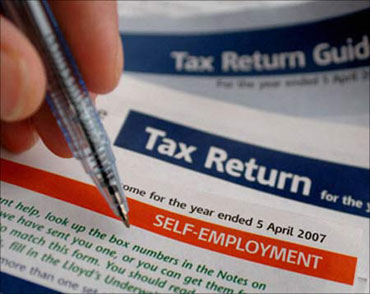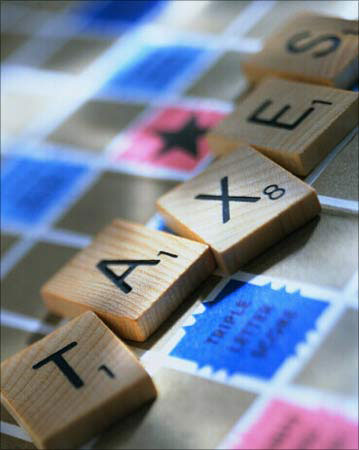Photographs: Uttam Ghosh/Rediff.com Shonalee Biswas
Income Tax Return forms in India are like the Golmaal series of movies. Every two years there is a new one.
Finance Minister Pranab Mukherjee had promised in his Budget Speech to come up with a simpler income tax return form, which would make the process of filing returns easier for the tax payer.
So living up to that promise, earlier this month, the Income Tax department notified the new Sahej form. This form seeks to replace the earlier Saral 2 form.
Sahej is a two-page form and on the face of it seems to be the most user friendly form that the Income Tax department has ever put out.
Anyone with a basic understanding of English and income tax can fill it up.
So here are a few things that you need to know about Sahej.
. . .
All about the new income tax return form
Sahej is not for everyone
This new form is only for those people who earn income from salary, pension, house property or other sources for that matter (which primarily means interest income from bank fixed deposits/company fixed deposits/post office monthly income scheme/senior citizen savings scheme/other post office scheme).
Also, if you happen to own more than one house then you are not eligible to use this form and will have to fill up the more complicated Indian Income Tax Return 2(ITR 2) form.
. . .
All about the new income tax return form
Photographs: Uttam Ghosh/Rediff.com
What happens if you have no income from house property?
In this situation two cases arise:
a) If you are repaying a home loan using which you bought the house;
b) If you do not have a home loan outstanding.
In both the cases you are eligible to fill the Sahej form on the condition that you fulfil all the other conditions. If you are repaying a home loan, then the interest that you pay on the home loan is essentially negative income from your house property.
The Income Tax Act currently allows tax payers to adjust a maximum of Rs 1.5 lakh (Rs 150,000) paid as home loan interest from taxable income.
If you already paid off your home loan and are staying in the house then there is zero income from house property and that in turn makes you eligible for this form.
. . .
All about the new income tax return form
What happens if you have income from stocks and equity mutual funds?
In this case you will not be eligible to use the Sahej form and will have to use the other Income Tax return forms depending whether you are a salaried individual or not.
This is the show spoiler in what is otherwise a very good move by the IT department.
A lot of salaried individuals do invest in tax-saving mutual funds to save taxes. As long as investment was limited to these mutual funds, taxpayers should have been allowed to use the Sahej form.
Also a lot of salaried middle class India over the years has taken to investing in mutual funds through the systematic investment plan (SIP) route.
Such individuals could also have been allowed to use the Sahej form subject to an upper limit on the amount being invested per year.
. . .
All about the new income tax return form
Has AIR (Annual Information Return) been done away with?
Sahej and all the other income tax return forms (ITR 2 to ITR 8) seem to have done away with the Annual Information Return filing.
The filing required a disclosure of transactions like payment made by Rs 2 lakh (Rs 200,000) or more through a credit card, bank deposits of Rs 10 lakh (Rs 1 million) or more, purchase of mutual fund units worth Rs 2 lakh or more, purchase of property worth Rs 30 lakh (Rs 3 million) or more, etc.
However, there is a small caveat that I would like to build in here. The instructions that normally accompany these forms have not been put out till now. So this cannot be said for sure.
Despite some short comings, all in all this is a good move towards easing the tax return filing process.
The author can be reached at shonalee.biswas@gmail.com






article